Feb 19, 2025
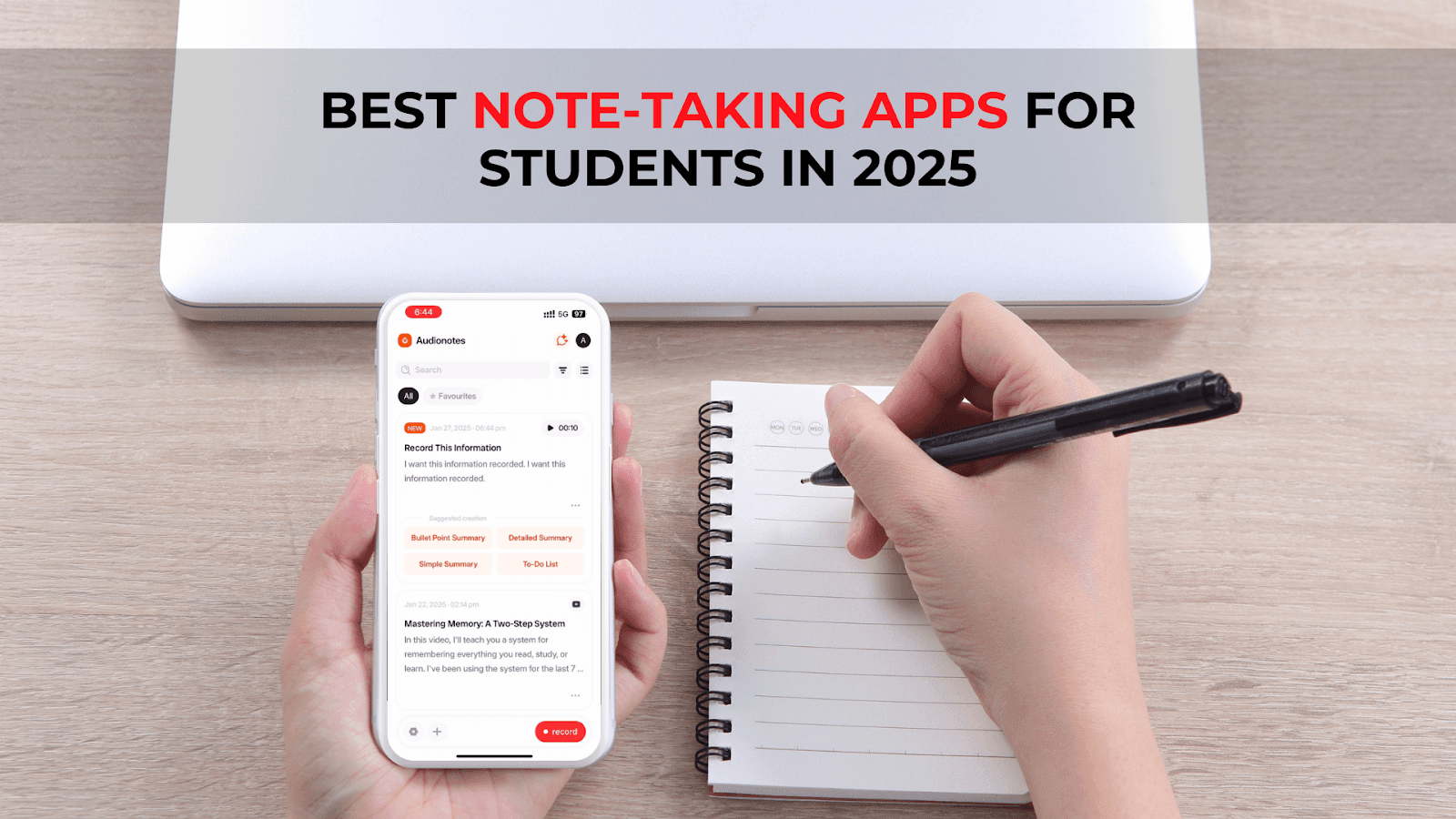
College life is fast-paced, and keeping track of lectures, assignments, and study materials can quickly become overwhelming. Whether it’s scribbling notes in a physical notebook or typing them into random Google Docs, traditional note-taking methods often fall short when it comes to organization, accessibility, and efficiency.
As coursework becomes more demanding, students need tools that can help streamline their study process while ensuring they can easily retrieve and revise information when needed.
Digital note-taking apps offer a more structured, searchable, and efficient way to manage study materials. With features like cloud syncing, multimedia integration, and AI-powered summaries, these apps go beyond simple note storage to provide students with interactive learning experiences. Instead of flipping through pages of handwritten notes or searching through disorganized files, students can instantly access, edit, and enhance their notes anytime, anywhere.
Different students have different note-taking styles, and the best apps cater to these needs in unique ways. In this guide, we cover the three main categories of note-taking apps for students, the top 8 best notetaking apps for college students, and finally, how you can choose the best notetaking app suited to your needs.
Three Main Categories of Note-taking Apps for Students
Here are the three main types of note-taking apps, each designed to suit different study styles and needs.
AI-Powered Note-Taking Apps
These tools automate the note-taking process, transcribing lectures, summarizing key points, and even generating study materials like flashcards and quizzes.
Best for students who struggle with keeping up in fast-paced lectures or prefer automated organization and structured revision.
Example: Audionotes – an AI-driven app that turns voice recordings, YouTube videos, and text notes into structured study materials.
Structured Database-Style Apps
Designed for students who prefer detailed organization, categorization, and cross-referencing of notes. These apps allow users to create subject-based notebooks, embed multimedia, and collaborate with classmates.
Best for students working on long-term research projects, dissertations, or multi-step study plans.
Example: Notion – an all-in-one workspace that combines note-taking with task management and research organization.
Simple, Distraction-Free Note-Taking Apps
Minimalist tools designed for quick, straightforward note capture without overwhelming features.
Best for students who prefer text-based notes without complex formatting or organization.
Example: Apple Notes – a clean and simple note-taking app that syncs across Apple devices.
This guide highlights the best note-taking apps for college students in 2025, each offering unique advantages depending on study habits and course requirements. Whether you need AI-generated study materials, a structured research tool, or a lightweight note-taking space, this list will help you find the right app to improve your academic productivity.
Top 8 Best Notetaking Apps for College Students
Here are the top eight note-taking apps that can help college students stay organized, improve productivity, and streamline their study process:
1. Audionotes – Best AI-Powered Note-Taking App for Students
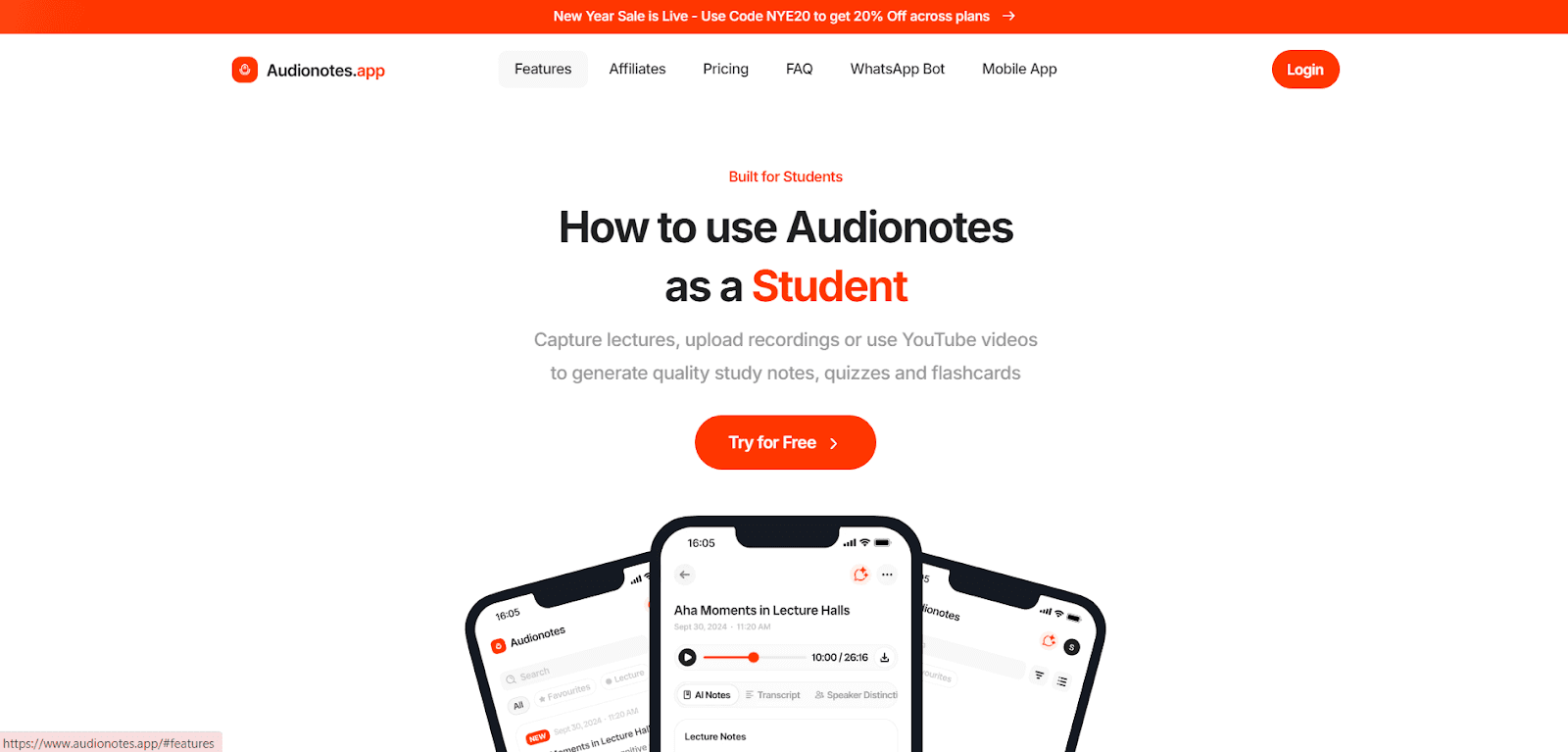
Audionotes is a cutting-edge AI-powered note-taking app designed specifically for students who want to automate and streamline their study process. It allows students to record lectures, transcribe audio, and generate structured study materials without manually taking notes.
Whether capturing live lectures, uploading recordings or extracting content from YouTube videos, Audionotes ensures that students always have accurate, well-organized notes ready for revision.
Key Features:
Lecture Recording & Transcription: Captures and transcribes live lectures, voice recordings, and YouTube videos into structured notes.
AI-Generated Summaries: Creates concise lecture summaries with key takeaways for quick revision.
Flashcards & Quizzes: Converts study materials into interactive flashcards and quizzes to reinforce learning.
Essay & Assignment Assistance: Generates well-structured essays, assignments, and study guides from dictated notes or text inputs.
Multilingual Support: Transcribes and translates notes in 30+ languages, making it accessible for international students.
AI Chat with Notes: Allows students to search within their notes and chat with them to get answers, clarify concepts, and explore key points in depth.
Seamless Integrations: Syncs with WhatsApp, Notion, and Zapier to automate workflows and keep study materials organized.
Custom Output Prompts: Provides pre-set AI prompts or allows custom queries to generate summaries, articles, and structured study notes.
Best For
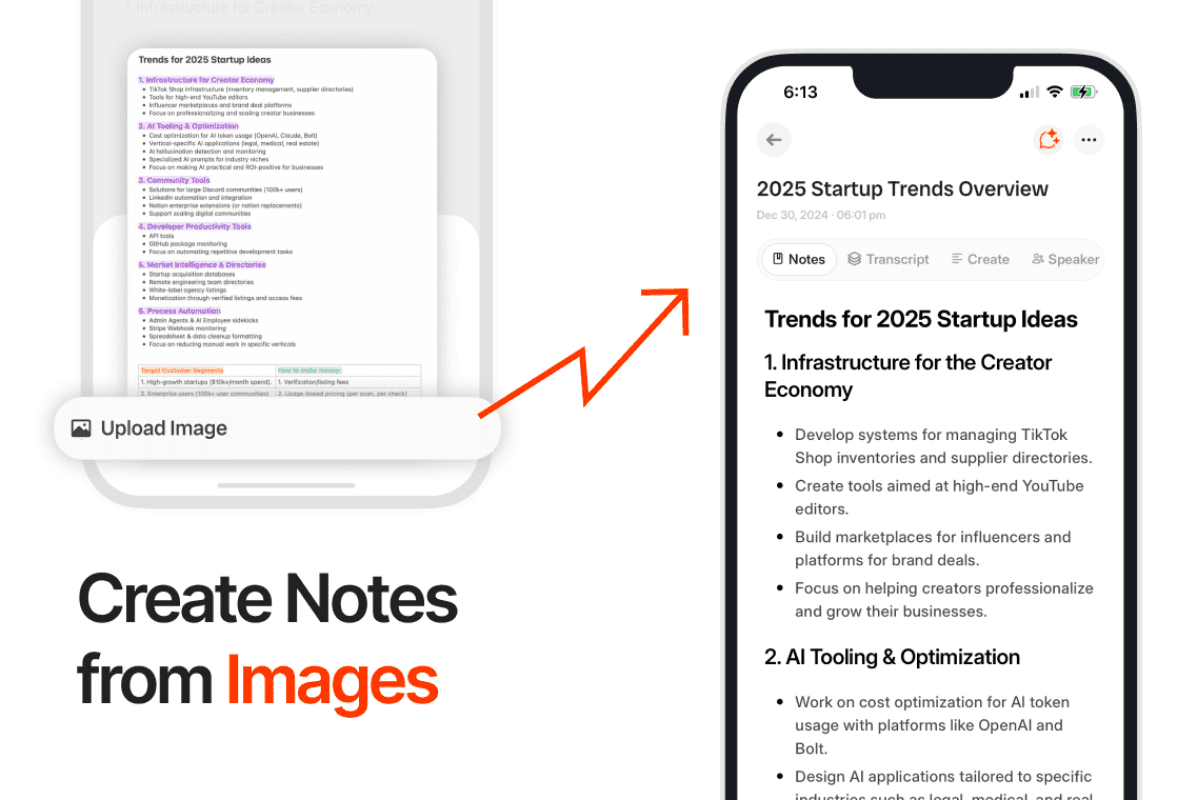
Students who struggle to keep up with fast-paced lectures and need automated note-taking.
Students with ADHD who benefit from structured, AI-powered study tools for better focus and organization.
Those who want a structured, AI-assisted way to revise, with features like flashcards, quizzes, and study guides.
Students who prefer multimodal learning through audio, text, images, and interactive study tools.
Cons
The app's extensive features may create a steep learning curve for some students.
Personal Plan: $9.99/month
Pro Plan: $19.99/month
AudioNotes is available on Android, iOS, and the web, so you can use it wherever it suits you best.
2. Microsoft OneNote – Best for Digital Notebook Organization
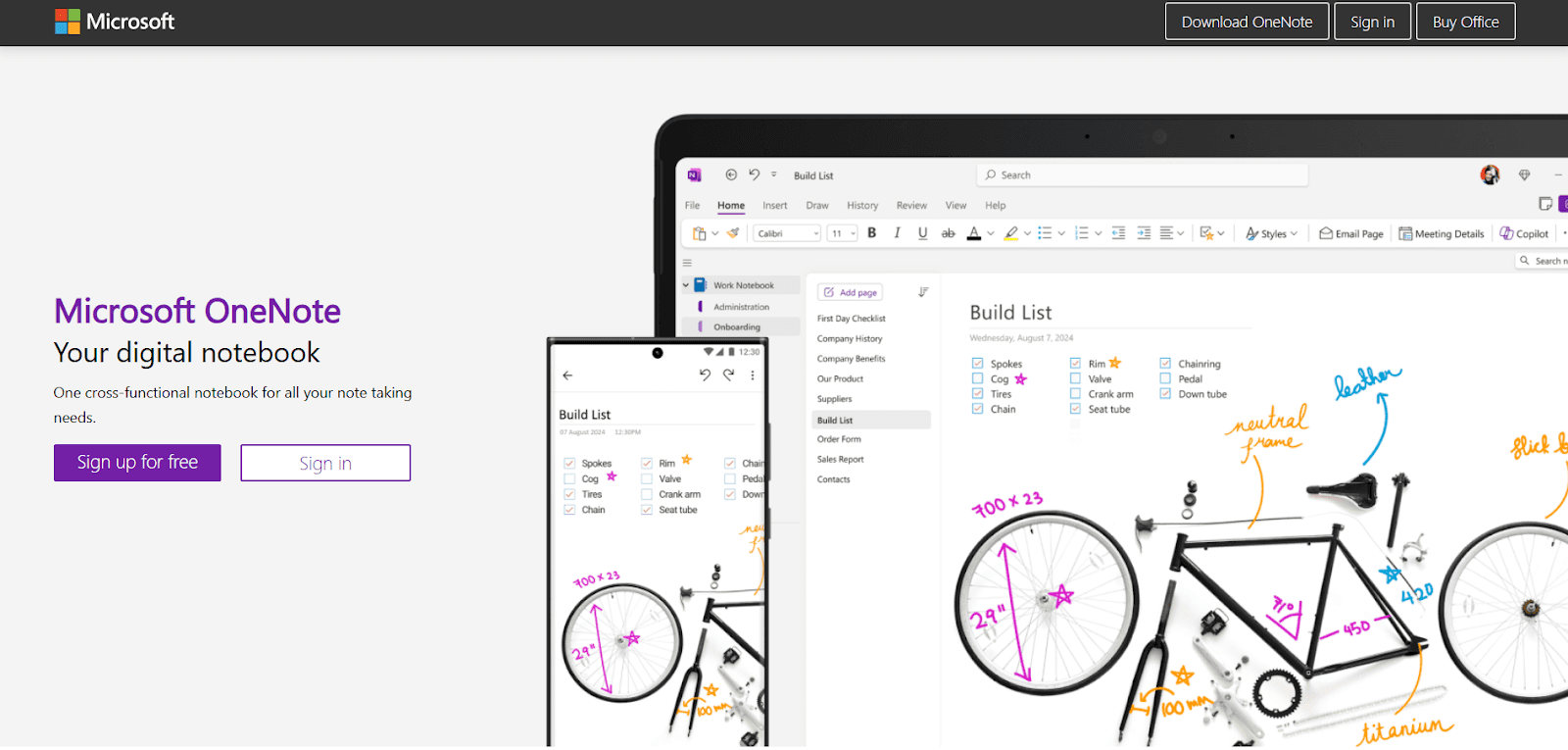
Microsoft OneNote is a digital notebook-style note-taking app designed to mimic the experience of a physical notebook. It allows students to organize notes by subject, section, and page, making it easy to keep track of different topics. With support for handwritten notes, multimedia integration, and cross-device syncing, OneNote is a flexible tool for students who need structured organization in their note-taking.
Key Features
Notebook and section-based organization: Divides notes into structured topics, making it easier to manage different subjects.
Handwritten notes support: Allows stylus input, making it ideal for writing equations, drawing diagrams, and annotating notes.
Immersive Reader mode: Reads notes aloud, improving accessibility for students with learning needs.
Syncs across devices: Works on Windows, macOS, iOS, and Android, ensuring notes are accessible anywhere.
Best For
Students who prefer a traditional notebook format but want the benefits of digital storage and organization.
Those who take handwritten notes and need stylus support for math equations, diagrams, or annotations.
Cons
The interface can feel overwhelming due to its many features, which may take time to learn.
Some features are only available with a Microsoft 365 subscription.
Pricing
Free version available with core features.
The paid version with premium features is included with Microsoft 365.
3. Evernote – Best for Comprehensive Task and Note Management
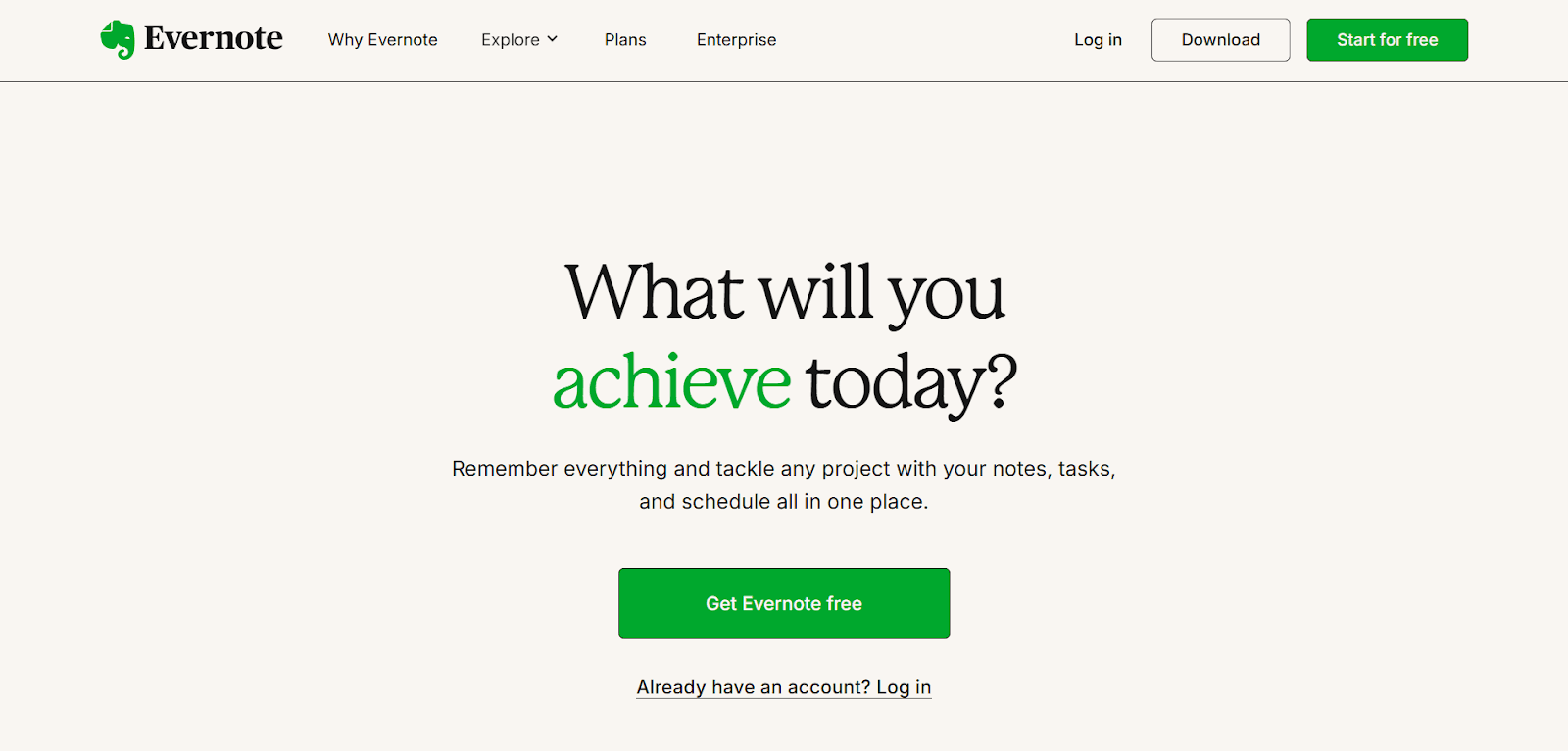
Evernote is a note-taking app that combines notes, tasks, and scheduling in one workspace. It is particularly useful for students who need a centralized platform to manage lectures, assignments, and deadlines. With multimedia support, Google Calendar integration, and a powerful search function, Evernote helps students stay organized and productive.
Key Features
Syncs with Google Calendar: Tracks assignments, deadlines, and study schedules to keep students organized.
Task lists and reminders: Helps manage coursework efficiently by setting due dates and priorities.
Multimedia support: Allows PDF annotations, voice recordings, and image attachments for enhanced note-taking.
Powerful search and OCR: Recognizes handwritten and scanned text, making it easy to retrieve specific notes quickly.
Web Clipper: Enables students to clip web pages, articles, and resources directly into their notebooks, saving research time and providing offline access.
Templates: Offers pre-designed templates for meeting notes, project planning, and study schedules, helping students get organized quickly.
Best For
Students who are looking for a comprehensive platform to manage notes, tasks, and schedules in one place.
Professionals managing multimedia files who need a powerful search tool to quickly access and organize content.
Cons
The free plan has limited functionality, allowing syncing across only two devices.
The premium plans can be expensive compared to other note-taking apps.
Pricing
Free Plan with basic features.
Evernote Personal: $14.99 per month.
Evernote Professional: $17.99 per month.
4. Notion – Best for Structured and Collaborative Notes
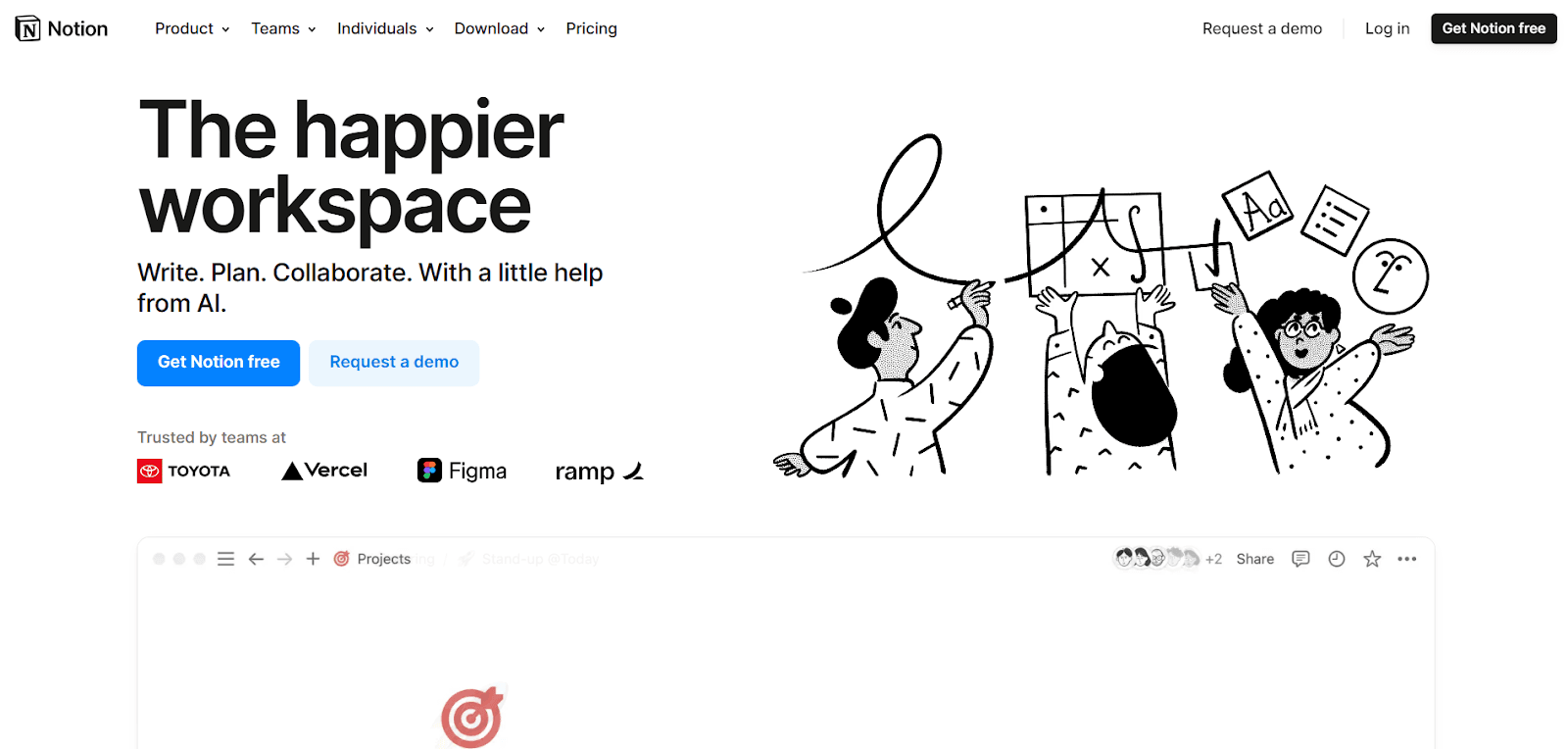
Notion is a database-driven note-taking app that provides a high level of customization, allowing students to structure their study materials exactly how they want. It combines note-taking with project management, making it a good tool for organizing notes, assignments, and study schedules in one place. With powerful collaboration tools, Notion is also useful for group projects and shared research.
Key Features
Blocks and databases: Organizes notes using tables, wikis, and Kanban boards for a structured study system.
Multimedia support: Adds images, videos, equations, and embedded links to enhance note-taking.
To-do lists and study planners: Tracks assignments and revision schedules to keep students on top of deadlines.
Collaboration tools: Enables easy sharing of notes and projects with classmates for group work.
Knowledge Base Creation: Enables students to build a personal knowledge repository, storing notes, resources, and research materials for future reference.
Best For
Students who prefer a structured and customizable note-taking system.
Those who need a collaborative platform for group work and shared study materials.
Cons
The interface has a learning curve and may feel overwhelming at first.
Limited offline functionality can be an issue for students needing access without an internet connection.
Pricing
Free plan.
Plus: $10/seat/month
Business: $15/seat/month
Enterprise: Custom
5. Obsidian – Best for Power Users and Research-Heavy Subjects
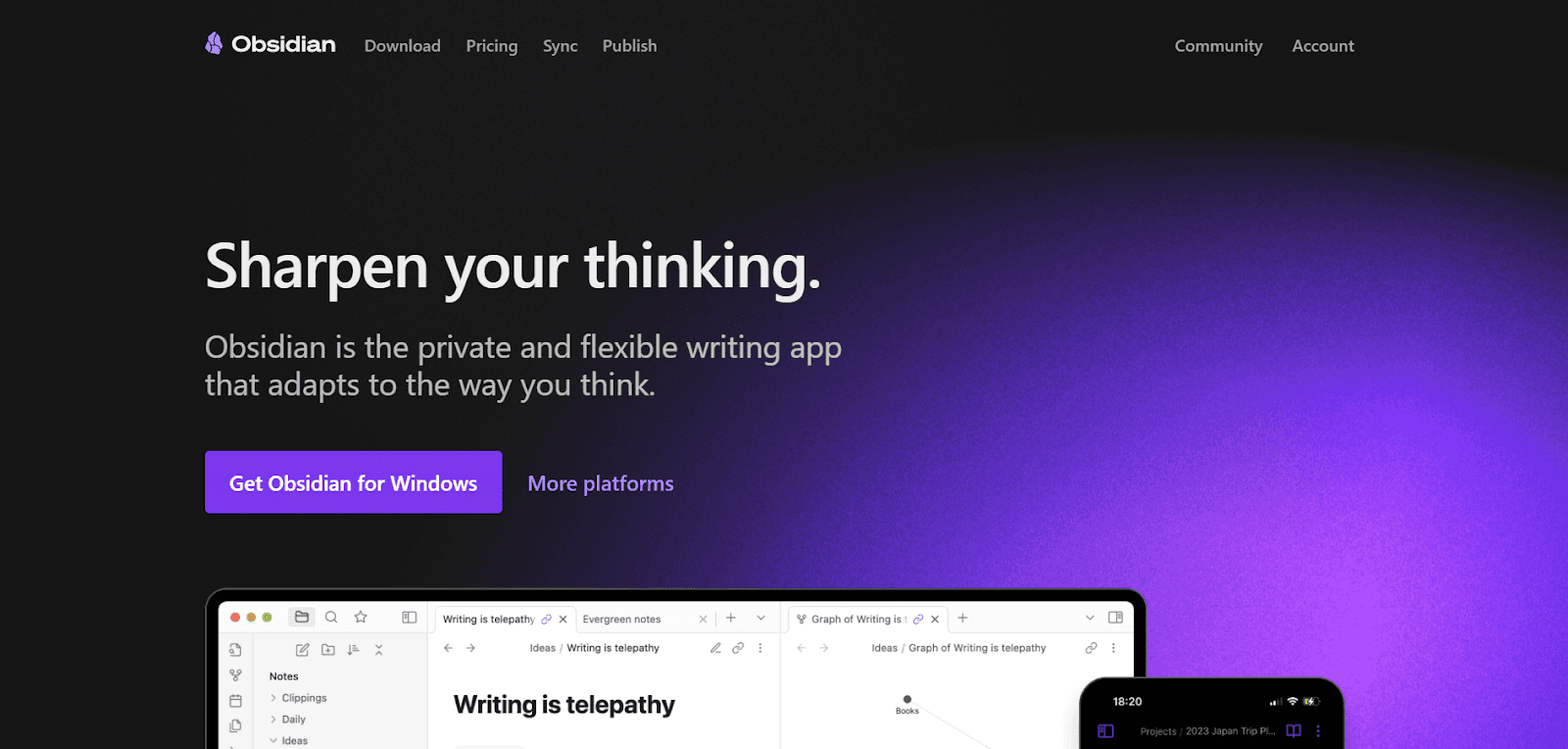
Obsidian is a markdown-based note-taking app designed for students who need to build complex knowledge structures. With an emphasis on interlinking ideas, it helps students create interconnected notes and visualize concepts through its graph view. It is particularly useful for STEM students, researchers, and those working on long-term academic projects.
Key Features
Linking Notes: Creates connections between notes using internal links, allowing students to build a web of ideas that’s easy to navigate and explore.
Graph View: Visualizes how notes are connected, giving students a comprehensive map of their thoughts and ideas.
Advanced formatting support: Includes Markdown, math equations, and code snippets for technical and structured notes.
Highly customizable with plugins: Helps expand functionality with features like mind maps and Kanban boards.
Offline access: Provides complete control over stored data without relying on cloud services.
Plugin Ecosystem: Offers a variety of plugins to extend functionality, such as calendar integration, task management, and even advanced search features.
Best For
STEM students and researchers who need to manage large volumes of interconnected information.
Those who prefer a highly customizable and locally stored note-taking system.
Cons
Set up and usage may require some technical knowledge to use effectively.
Those working on long-term research or knowledge-building projects.
Lacks built-in collaboration features, making it less suitable for group work.
Pricing
Free for personal use.
Commercial: $50/user/year
6. Bear Notes – Best for Structured Note-taking With Markdown
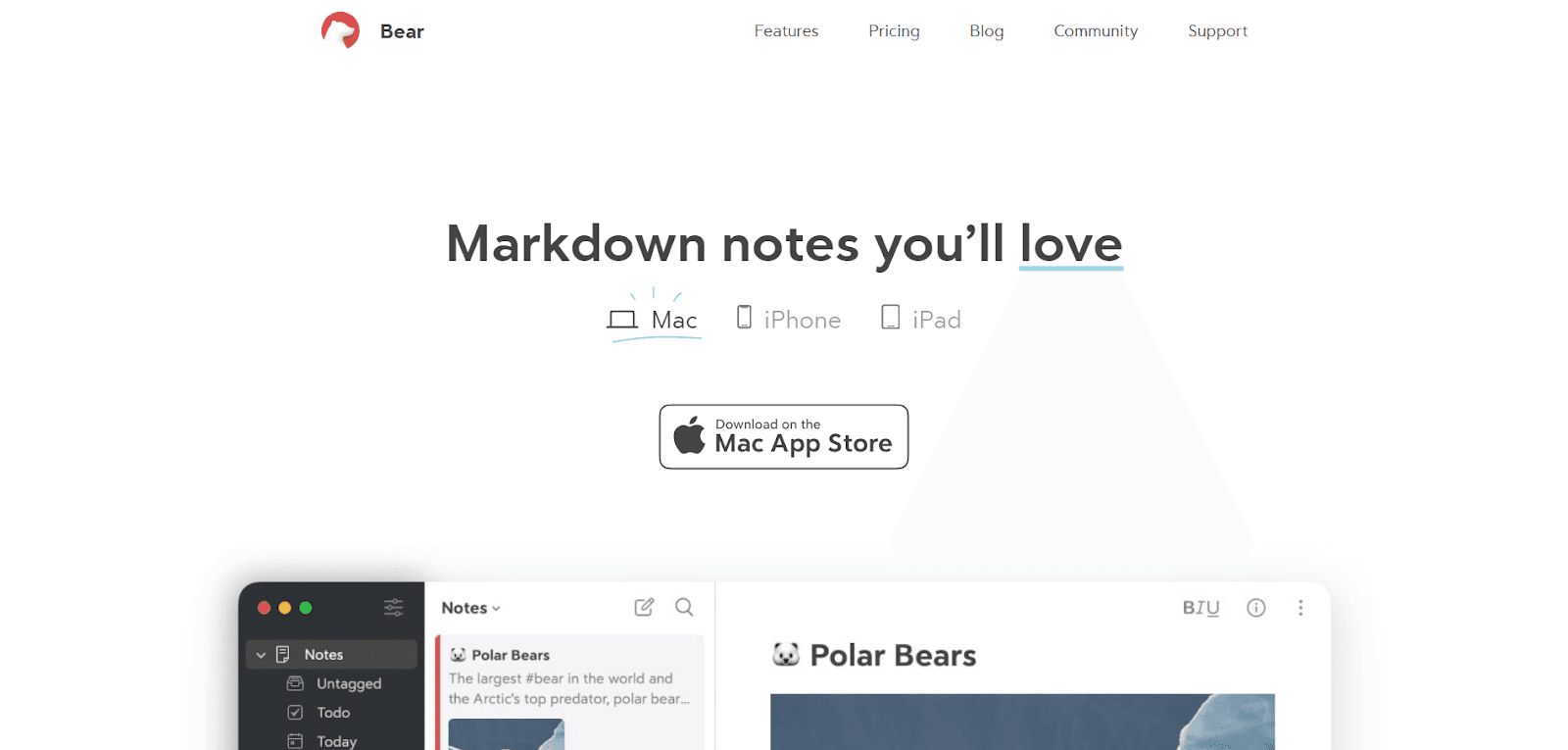
Bear Notes is a minimalist note-taking app designed for college students who need a distraction-free writing environment with advanced organizational tools. It supports Markdown formatting, making it ideal for structuring lecture notes, research summaries, and essays.
Instead of traditional folders, Bear Notes uses hashtags and nested tags, allowing students to categorize and retrieve notes efficiently. With cross-device syncing between iPhone, iPad, and Mac, students can seamlessly switch between devices while working on assignments or reviewing class materials.
Key Features
Markdown support: Helps students structure notes efficiently using headings, lists, and formatting tools.
Hashtag-based organization: Allows flexible note categorization instead of rigid folder structures.
Cross-platform syncing: Ensures seamless access to notes across iPhone, iPad, and Mac.
Advanced formatting options: Supports to-do lists, tables, and embedded images for enriched note-taking.
Best For
College students who prefer structured note-taking with Markdown.
Those who need an organized system using hashtags and nested tags instead of traditional folders.
Students who work primarily on Apple devices and need seamless syncing across iOS and macOS.
Cons
No support for Windows or Android, limiting cross-platform accessibility.
Lacks collaboration features, making it less ideal for group projects.
Pricing
Free Plan
Pro Plan: $2.99/month
7. Google Keep – Best for Quick Notes and To-Do Lists
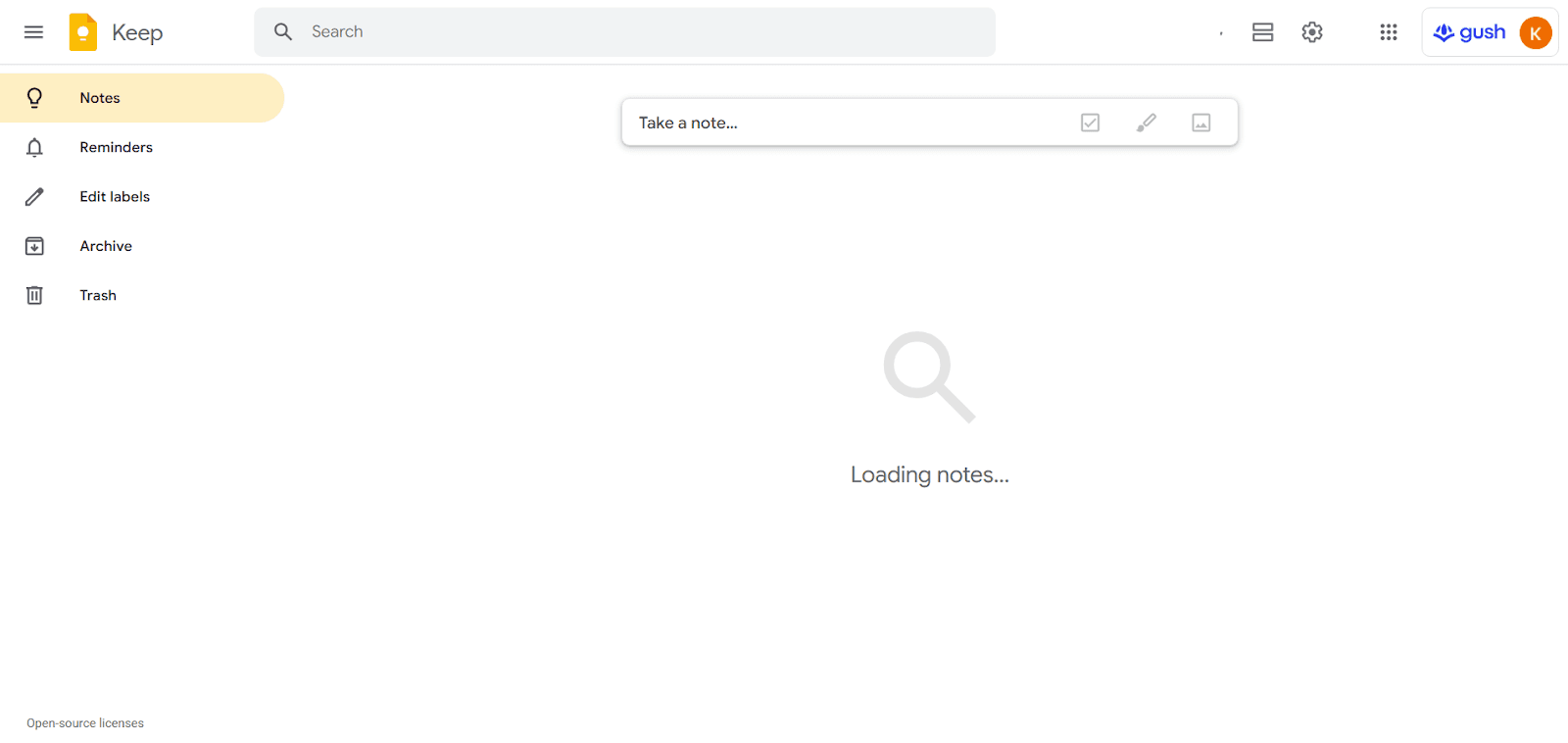
Google Keep is a sticky note-style app designed for capturing quick thoughts, reminders, and to-do lists. While it lacks the depth needed for detailed lecture notes, it excels at short-term memory tasks and organizing simple ideas. Its integration with Google Drive and Google Calendar makes it a convenient tool for students who already use Google’s ecosystem.
Key Features
Color-Coded Notes: Organizes notes with different colors, helping students visually sort and prioritize their tasks, notes, and reminders.
Reminders with time and location trigger: Ensures students never miss an important task.
Syncs with Google Drive and Google Calendar: Keeps notes accessible across all devices.
Voice Memos: Allows students to record and save voice notes, which can be transcribed automatically for easy reference.
Search Functionality: Offers a powerful search function that makes it easy to find notes based on keywords, colors, or labels.
Archived Notes: Keeps archived notes out of sight but still accessible so students can declutter their workspace without losing important information.
Collaborative Notes: Enables real-time collaboration on notes, making it easy for students to work together on projects and study materials.
Reminders: Allows students to set time-based or location-based reminders to ensure important tasks or deadlines are never forgotten.
Best For
Students who prefer a simple, visually organized app for quick reminders and to-do lists.
Cons
Less ideal for in-depth note-taking or long-form content creation.
Limited formatting and organization features.
Pricing
Free (part of a Google account).
8. Simplenote – Best for Distraction-Free Writing
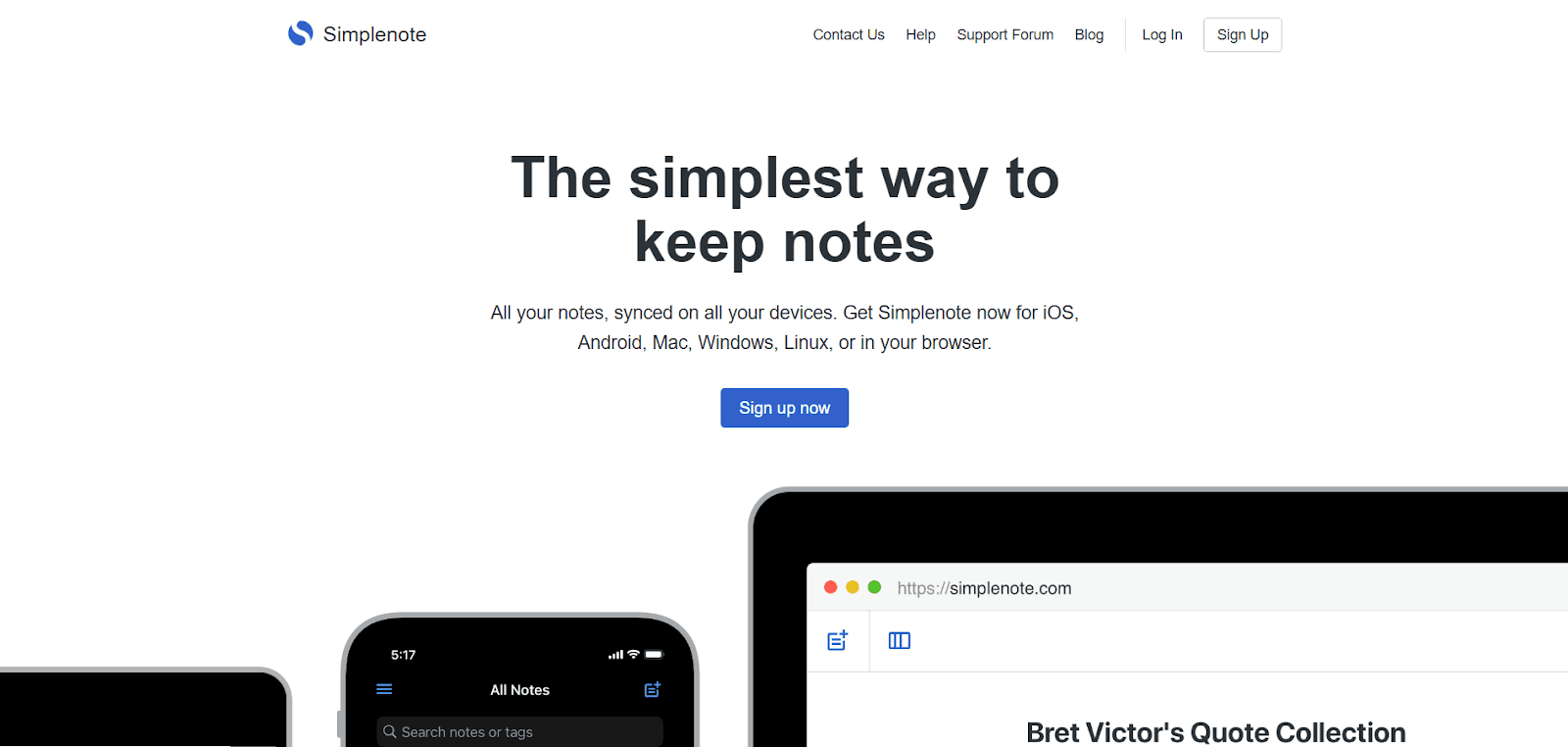
Simplenote is a minimalist note-taking app designed for students who need a clutter-free writing space. It focuses on plain text, making it ideal for distraction-free note-taking and quick organization. With built-in markdown support, it’s also a great option for students who prefer lightweight formatting tools.
Key Features
Tagging: Helps organize notes by adding tags, making it easy to find related content quickly.
Syncs across multiple devices: Works on Mac, Windows, Linux, iOS, and Android.
Search Functionality: Offers a fast and powerful search feature, allowing students to quickly locate specific notes or information.
Version History: Keeps track of note changes, allowing students to access previous versions if needed.
Note Sharing – Allows students to share their notes with peers, making it easy to collaborate or exchange study materials.
Best For
Students who need a fast, distraction-free note-taking app with markdown support.
Those who don’t need advanced features like multimedia support or rich formatting options compared to other note-taking apps.
Cons
Limited project management and organizational tools for students who need more complex note organization.
No rich text formatting, which may limit usability for some students.
Pricing
Free.
Each of these apps serves a similar purpose but caters to different needs. Ultimately, the best note-taking app for you will depend on your unique preferences as a student. Let's now explore how to choose the right app for your needs.
How to Choose the Best Note-Taking App for You: A Guide for College Students
Choosing the right note-taking app can make a huge difference in how effectively you manage your studies and stay organized throughout college. With so many options out there, it can be hard to decide which app suits your needs. Here’s a guide to help you choose the best note-taking app for your college life:
1. Consider Your Learning Style
Different students learn in different ways. Some may prefer visual aids, while others learn better through written text. Choose an app that supports your preferred learning style:
Visual learners: Look for apps with strong support for images, diagrams, and multimedia.
Auditory learners: An app like Audionotes with speech-to-text or audio recording features might be ideal.
Kinesthetic learners: Apps that support handwriting or touch input could be a good fit.
Consider your learning style when choosing a note-taking app, as it can greatly enhance how effectively you absorb and retain information.
2. Cross-Device Syncing
College life is busy, and you may need to access your notes from different devices, whether it's your laptop during class or your phone while commuting. Make sure the app you choose syncs across multiple devices seamlessly. Most popular note-taking apps offer cloud syncing, but always check if they support all your devices.
3. Organization Features
Organizing your notes is crucial for easy access and retrieval. Look for apps that allow you to:
Create folders or notebooks for different subjects or projects
Tag notes for easy categorization and searching
Highlight or mark important information for quick reference
Choose apps with features like folders, tags, and highlighting to keep your notes structured and easily accessible.
4. Collaboration Features
Collaboration is essential for group projects or sharing notes with classmates. Opt for apps that offer easy note-sharing, real-time collaboration, and comment features to enhance teamwork and communication.
5. Search Functionality
A robust search feature is essential for quickly locating specific information in your notes. Make sure the app you choose lets you search through typed, handwritten, and audio notes, with options to filter by keywords or tags.
6. Integration with Other Tools
Many students use additional tools for scheduling, task management, and research. Check if the note-taking app integrates with other tools you already use, such as Google Drive, Notion, or Trello.
7. Offline Access
Sometimes, you may not have internet access, especially during commutes or in class. Look for apps like Audionotes that allow you to work offline and sync your changes once you're back online.
8. Price and Budget
Many note-taking apps offer both free and paid versions. The free versions are often quite good, but paid versions may offer additional features like more storage, advanced formatting options, or team collaboration tools. Make sure the app you choose fits within your budget.
9. User-Friendly Interface
A simple, clean interface is crucial for a smooth note-taking experience. Choose an app that is easy to navigate, with tools and features that don’t overwhelm you. Look for an intuitive design that allows you to focus on your notes, not on figuring out how the app works.
10. Security and Privacy
Your notes may contain sensitive information, so it's important to choose an app that ensures your data is secure. Make sure the app offers encryption and password protection options.
By considering these factors, you’ll be able to find the best note-taking app that fits your personal study habits and helps you stay organized and productive throughout your college years.
Conclusion
Effective note-taking plays a key role in managing coursework, staying organized, and preparing for exams. Whether you need AI-powered automation like Audionotes, a structured notebook system like OneNote, or a minimalist tool like Google Keep, the right app can transform how you study.
If you want a smarter, more efficient way to take notes, Audionotes does the work for you—automatically transcribing lectures, summarizing key points, and even generating flashcards and quizzes. No more scrambling to jot everything down or losing track of important details. Focus on learning while Audionotes keeps your lecture notes structured and ready for revision.
Try AudioNotes free today and take control of your study process! Available on iOS, Android, and the web for your convenience—download now!
